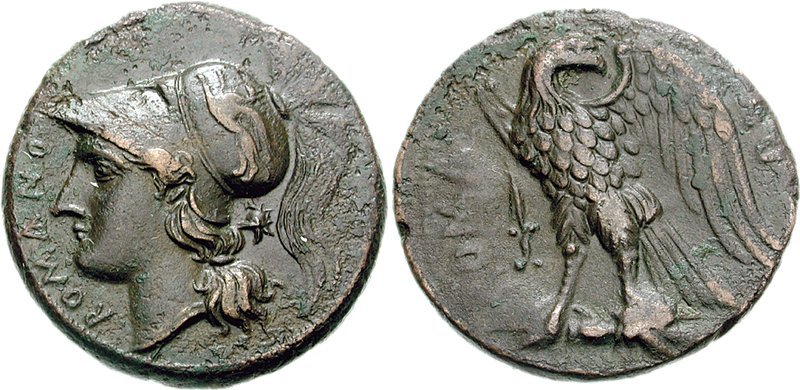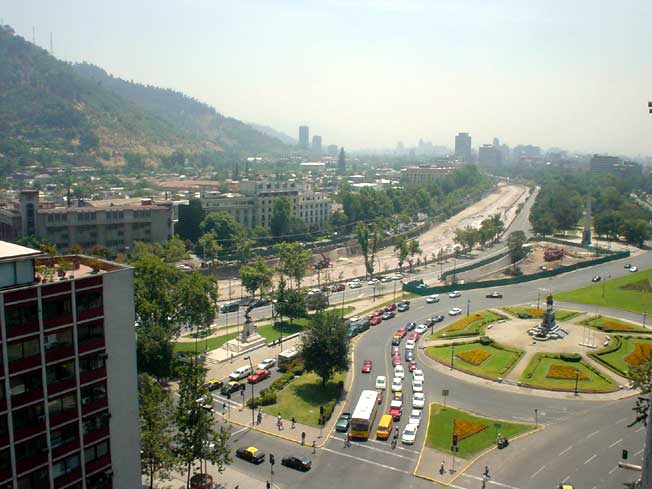|
Giuseppina Vadalà
Giuseppina Vadalà (; 1824 in Messina – 7 October 1914 in Santiago de Chile) was an Italian patriot. Biography Revolutionary activity Giuseppina Vadalà fought together with her sister Paolina during the Siege of Messina, the revolt for Italian unification that took place in Messina on September 5, 1848. Messinese by birth, she was the daughter of the patriot Pietro Vadalà and wife of Orazio Nicosia, another fighter who joined the revolt against the Bourbons of Naples. Giuseppina had three children: Totò, Orazio, and Bianca. When her elder son Totò grew up, he decided to move to Naples, where he threw himself, heart and soul, into the cause of Italian unification. When her daughter Bianca was grown to womanhood, she married Giovanni Bovio, a noted philosopher and republican politician. The Italian government awarded Vadalà the Silver Medal of Military Valor for her part in pro-unification battles during the years 1848–1849 and 1860. Castroreale and Cristo Lungo Acco ... [...More Info...] [...Related Items...] OR: [Wikipedia] [Google] [Baidu] |
Messina
Messina ( , ; ; ; ) is a harbour city and the capital city, capital of the Italian Metropolitan City of Messina. It is the third largest city on the island of Sicily, and the 13th largest city in Italy, with a population of 216,918 inhabitants in the city proper and about 595,948 in the metropolitan city as of 2025. It is located near the northeast corner of Sicily, at the Strait of Messina and it is an important access terminal to Calabria region, Villa San Giovanni, Reggio Calabria on the mainland. Founded by the Sicels with the name of ''Zancle'' in 757 BC, which in Siculian, their language meant sickle, it was repopulated by Greek colonisation, Greek colonists of Magna Graecia and renamed ''Messana''. The city was renamed ''Messina'' in the Byzantine Empire, Byzantine age. It was an important Roman Empire, Roman, and then Byzantine Empire, Greek-Byzantine city, but in 843 it was completely destroyed by the Arabs. Almost abandoned during the Islamic period, it rose again i ... [...More Info...] [...Related Items...] OR: [Wikipedia] [Google] [Baidu] |
South America
South America is a continent entirely in the Western Hemisphere and mostly in the Southern Hemisphere, with a considerably smaller portion in the Northern Hemisphere. It can also be described as the southern Subregion#Americas, subregion of the Americas. South America is bordered on the west by the Pacific Ocean, on the north and east by the Atlantic Ocean, and to the south by the Drake Passage; North America and the Caribbean Sea lie to the northwest. The continent includes twelve sovereign states: Argentina, Bolivia, Brazil, Chile, Colombia, Ecuador, Guyana, Paraguay, Peru, Suriname, Uruguay, and Venezuela; two dependent territory, dependent territories: the Falkland Islands and South Georgia and the South Sandwich Islands; and one administrative division, internal territory: French Guiana. The Dutch Caribbean ABC islands (Leeward Antilles), ABC islands (Aruba, Bonaire, and Curaçao) and Trinidad and Tobago are geologically located on the South-American continental shel ... [...More Info...] [...Related Items...] OR: [Wikipedia] [Google] [Baidu] |
19th-century Italian Women
The 19th century began on 1 January 1801 (represented by the Roman numerals MDCCCI), and ended on 31 December 1900 (MCM). It was the 9th century of the 2nd millennium. It was characterized by vast social upheaval. Slavery was Abolitionism, abolished in much of Europe and the Americas. The First Industrial Revolution, though it began in the late 18th century, expanded beyond its British homeland for the first time during the 19th century, particularly remaking the economies and societies of the Low Countries, France, the Rhineland, Northern Italy, and the Northeastern United States. A few decades later, the Second Industrial Revolution led to ever more massive urbanization and much higher levels of productivity, profit, and prosperity, a pattern that continued into the 20th century. The Catholic Church, in response to the growing influence and power of modernism, secularism and materialism, formed the First Vatican Council in the late 19th century to deal with such problems an ... [...More Info...] [...Related Items...] OR: [Wikipedia] [Google] [Baidu] |
Women In 19th-century Warfare
A woman is an adult female human. Before adulthood, a female child or adolescent is referred to as a girl. Typically, women are of the female sex and inherit a pair of X chromosomes, one from each parent, and women with functional uteruses are capable of pregnancy and giving birth from puberty until menopause. More generally, sex differentiation of the female fetus is governed by the lack of a present, or functioning, ''SRY'' gene on either one of the respective sex chromosomes. Female anatomy is distinguished from male anatomy by the female reproductive system, which includes the ovaries, fallopian tubes, uterus, vagina, and vulva. An adult woman generally has a wider pelvis, broader hips, and larger breasts than an adult man. These characteristics facilitate childbirth and breastfeeding. Women typically have less facial and other body hair, have a higher body fat composition, and are on average shorter and less muscular than men. Throughout human history, traditional ge ... [...More Info...] [...Related Items...] OR: [Wikipedia] [Google] [Baidu] |
Italian Emigrants To Chile
Italian(s) may refer to: * Anything of, from, or related to the people of Italy over the centuries ** Italians, a Romance ethnic group related to or simply a citizen of the Italian Republic or Italian Kingdom ** Italian language, a Romance language *** Regional Italian, regional variants of the Italian language ** Languages of Italy, languages and dialects spoken in Italy ** Italian culture, cultural features of Italy ** Italian cuisine, traditional foods ** Folklore of Italy, the folklore and urban legends of Italy ** Mythology of Italy, traditional religion and beliefs Other uses * Italian dressing, a vinaigrette-type salad dressing or marination * Italian or Italian-A, alternative names for the Ping-Pong virus, an extinct computer virus * ''Italien'' (magazine), pro-Fascist magazine in Germany between 1927 and 1944 See also * * * Italia (other) * Italic (other) * Italo (other) * The Italian (other) * Italian people (other) Italian ... [...More Info...] [...Related Items...] OR: [Wikipedia] [Google] [Baidu] |
People From Santiago, Chile
The term "the people" refers to the public or common mass of people of a polity. As such it is a concept of human rights law, international law as well as constitutional law, particularly used for claims of popular sovereignty. In contrast, a people is any plurality of persons considered as a whole. Used in politics and law, the term "a people" refers to the collective or community of an ethnic group or nation. Concepts Legal Chapter One, Article One of the Charter of the United Nations states that "peoples" have the right to self-determination. Though the mere status as peoples and the right to self-determination, as for example in the case of Indigenous peoples (''peoples'', as in all groups of indigenous people, not merely all indigenous persons as in ''indigenous people''), does not automatically provide for independent sovereignty and therefore secession. Indeed, judge Ivor Jennings identified the inherent problems in the right of "peoples" to self-determination, as i ... [...More Info...] [...Related Items...] OR: [Wikipedia] [Google] [Baidu] |
Italian Revolutionaries
Italian(s) may refer to: * Anything of, from, or related to the people of Italy over the centuries ** Italians, a Romance ethnic group related to or simply a citizen of the Italian Republic or Italian Kingdom ** Italian language, a Romance language *** Regional Italian, regional variants of the Italian language ** Languages of Italy, languages and dialects spoken in Italy ** Italian culture, cultural features of Italy ** Italian cuisine, traditional foods ** Folklore of Italy, the folklore and urban legends of Italy ** Mythology of Italy, traditional religion and beliefs Other uses * Italian dressing, a vinaigrette-type salad dressing or marination * Italian or Italian-A, alternative names for the Ping-Pong virus, an extinct computer virus * ''Italien'' (magazine), pro-Fascist magazine in Germany between 1927 and 1944 See also * * * Italia (other) * Italic (other) * Italo (other) * The Italian (other) * Italian people (other) Italian ... [...More Info...] [...Related Items...] OR: [Wikipedia] [Google] [Baidu] |
Giuseppa Bolognara Calcagno
Giuseppa Bolognara Calcagno (), better known as Peppa la cannoniera (Josie the Cannoneer), in Sicilian: ''Peppa a cannunera'', ( Barcellona Pozzo di Gotto, 1826–1884), was an Italian patriot. Biography She was born in Barcellona Pozzo di Gotto, near Messina, Sicily, in 1826, although according to some she was born in 1846. She began life as a foundling. Her surname "Bolognara" or "Calcagno" (often both are used) came from the nurse she was entrusted to, having been abandoned by her biological parents. It is said that after a difficult childhood growing up at an orphanage in Catania, she became the servant of a Catanian innkeeper; she may also have worked in the stables. Bolognara Calcagno is not mentioned for her "virtuousness," the main trait by which women were judged in that era, given that she had a relationship with a man much younger than her, and for this she was degraded in the eyes of 19th-century society. This young man, a stable boy by trade, was named Vanni. I ... [...More Info...] [...Related Items...] OR: [Wikipedia] [Google] [Baidu] |
Italian Chileans
Italian Chileans (; ) are Chilean-born citizens who are fully or partially of Italian descent, whose ancestors were Italians who emigrated to Chile during the Italian diaspora, or Italian-born people in Chile. It is estimated that about 800,000 Chileans are of full or partial Italian ancestry, corresponding to about 4,5% of the total population, while Italians by birth in Chile are about 52,000. In Southern Chile, there were state-conducted Italian immigrant programs though they were not as massive as the German and Croatian immigrant programs. Families settled especially in Capitán Pastene, Angol, Lumaco, and Temuco but also in Valparaiso, Concepción, Chillán, Valdivia, and Osorno. One of the notable Italian influences in Chile is, for example, the sizable number of Italian surnames of a proportion of Chilean politicians, businessmen, and intellectuals, many of whom intermarried into the Castilian-Basque elites. Italian Chileans, along with French Chileans, contributed ... [...More Info...] [...Related Items...] OR: [Wikipedia] [Google] [Baidu] |





